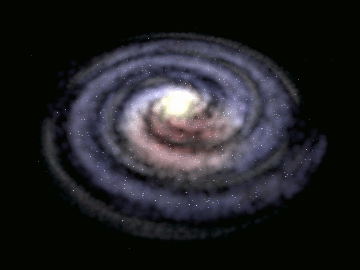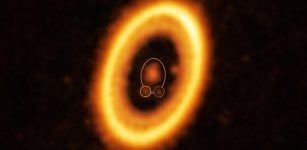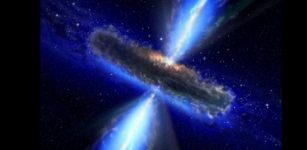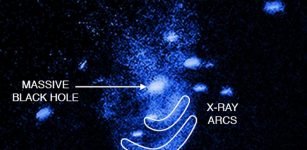Origin Of A Runaway High-Velocity Star PG 1610+062 – Pinpointed
Eddie Gonzales Jr. – MessageToEagle.com – An international team of astronomers has pinpointed the origin of a runaway high-velocity star named PG 1610+062.
The team has determined that it was likely ejected from its birth cluster with the help of a mid-mass black hole (MMBH).
In order to put tight constraints on PG 1610+062’s projected rotational velocity, its radial velocity, as well as measure its chemical composition accurately, the team needed spectral data of the star, but its distance and position in the sky made W. M. Keck Observatory’s Echellette Spectrograph and Imager (ESI) the only tool for the job.
“In the northern hemisphere, only the combination of Keck Observatory and ESI gave us what we needed. The collecting area of Keck allowed us to gather enough photons for our object and ESI has exactly the right resolution, which is high enough to resolve all the spectral features,” says co-author Thomas Kupfer, a Kavli Institute for Theoretical Physics Postdoctoral Scholar at the University of California, Santa Barbara, in a press release.
While formerly considered an old star with half a solar mass, typical for the galactic halo, the Keck Observatory data revealed that PG1610+062 is actually a surprisingly young star that’s ten times more massive, ejected from the Galactic disk almost at the escape velocity from the Milky Way.

By using the European Space Agency’s Gaia spacecraft’s unprecedented astrometric precision measurements, PG1610+062 has been traced back to nowhere near the Galactic Center, but to the Sagittarius spiral arm of our galaxy, therefore ruling out the idea that the Galactic Center SMBH slingshot the star.
Even more interesting is the derived extreme acceleration of PG1610+062, which excludes most likely all alternative scenarios except the interaction with a MMBH. Such objects have been predicted to exist in young stellar clusters in the spiral arms of the Milky Way, but none has been detected yet.
“Now, PG1610+062 may provide evidence that MMBHs could indeed exist in our galaxy. The race is on to actually find them,” says lead author Andreas Irrgang of the Friedrich-Alexander University of Erlangen-Nuremberg in Germany.
Written by Eddie Gonzales Jr. – MessageToEagle.com Staff











